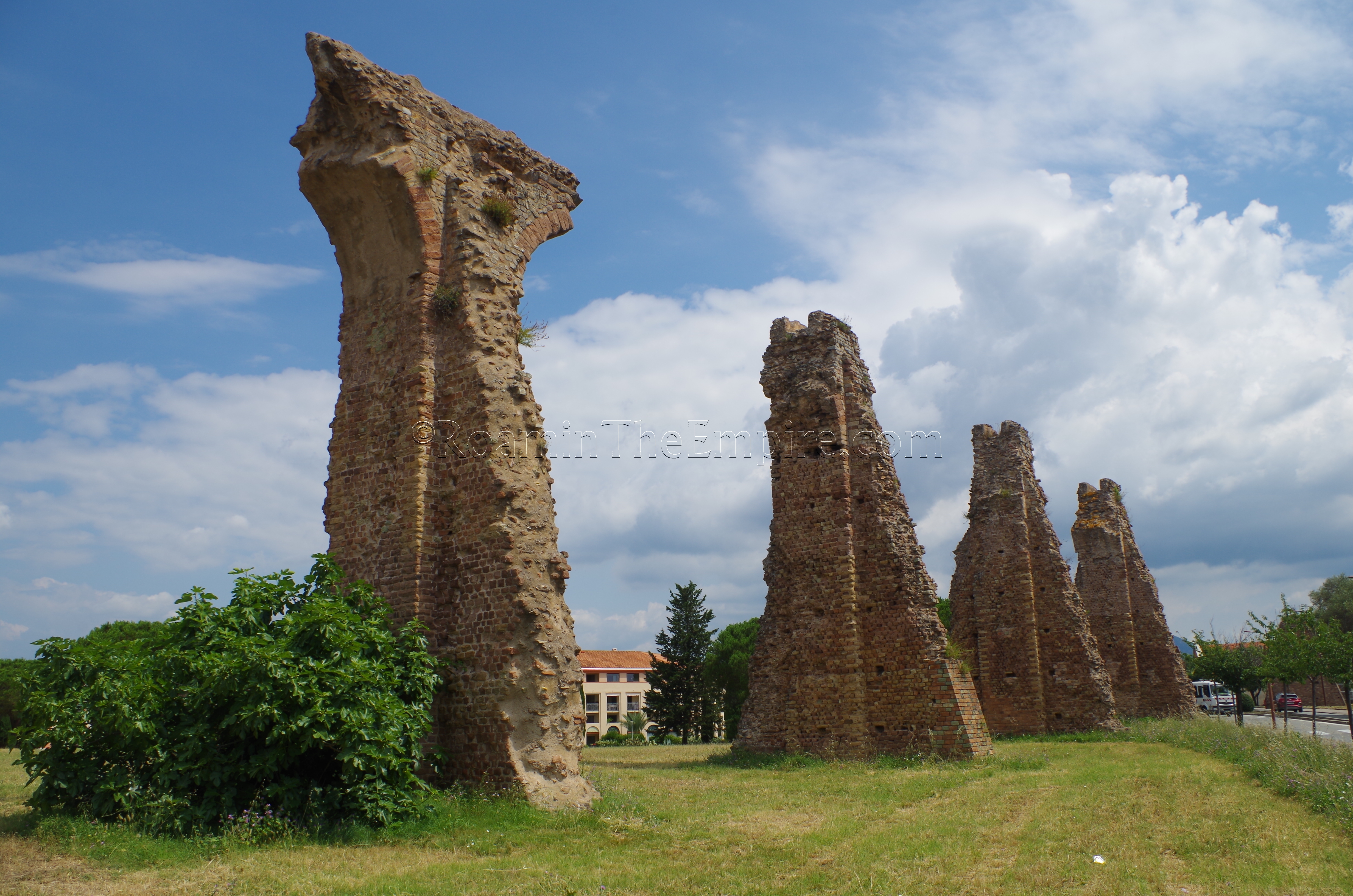
History
The exact date of the founding of Forum Julii, the ancient predecessor to modern Fréjus, is a bit unclear. The name suggests that it was founded by Julius Caesar, and as such, it is likely that it was founded somewhere around 49 BCE, perhaps as some sort of camp or supply station during Caesar’s siege of Massalia. Forum Julii is mentioned by Cicero in a correspondence dated to 43 BCE, making that the absolute latest date it could have been incorporated. There does not seem to be a permanent Celto-Ligurian settlement at that area, though there is evidence of intermittent habitation in that and earlier period. Sometime between its founding in 49 BCE and the Battle of Actium in 31 BCE, a large port was laid out at Forum Julii.
Following the Battle of Actium, the remains of Marcus Antonius’ fleet was sent to Forum Julii. In addition, shortly afterward, a colony of veterans from Legio VIII was sent by Octavian to Forum Julii, and it was given the additional name attribute of Colonia Octavanorum. Under Augustus, Forum Julii became a major naval base on par with Ravenna/Classis and Misenum. According to Pliny the Elder notes that the city was additionally referred to as Pacensis Classica, referring to the fleet stationed there and the circumstances under which it arrived. As the Empire stabilized, the military importance of the port at Forum Julii waned, but it remained an important commercial center.
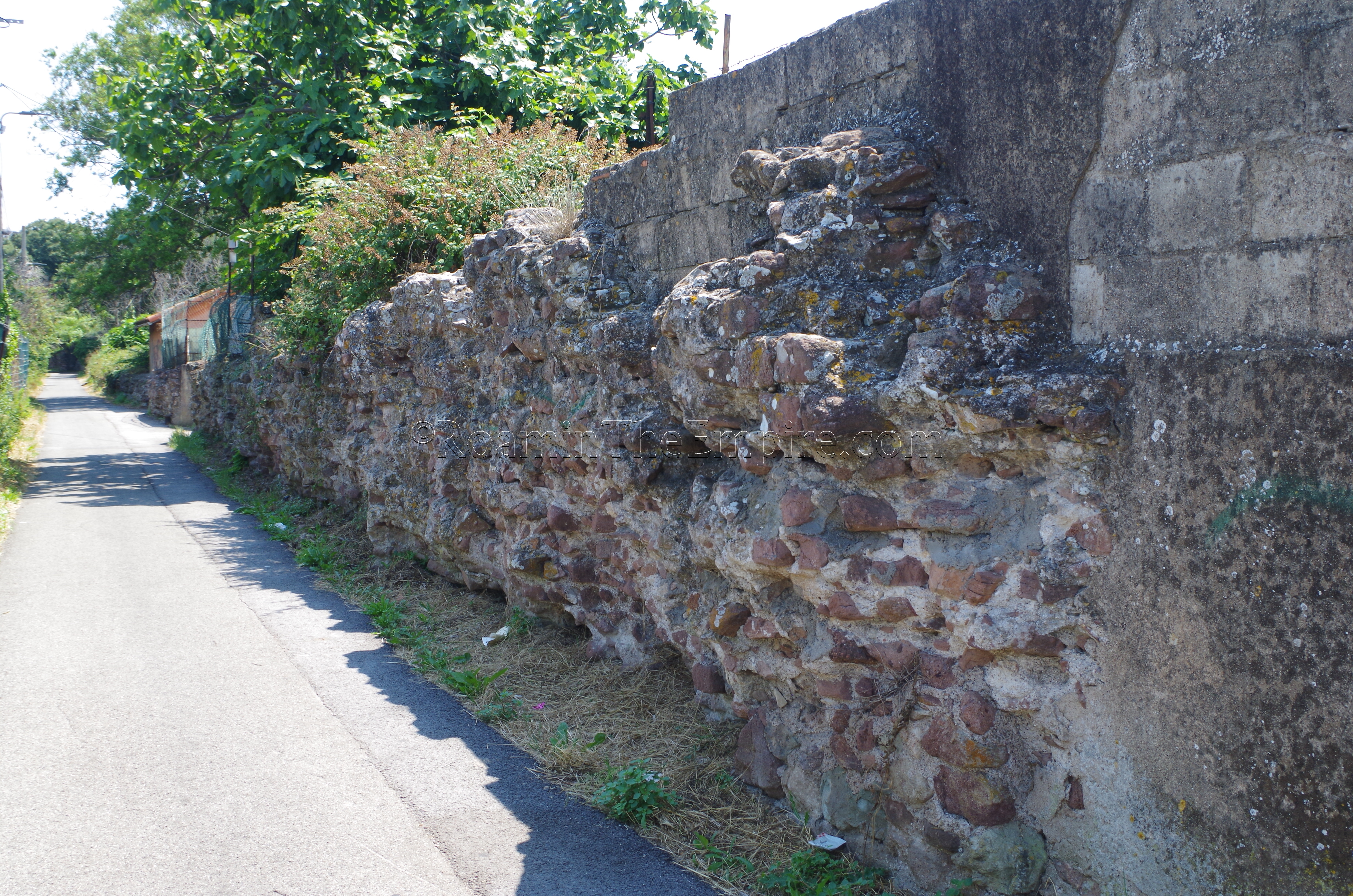
Further improvements were made to Forum Julii under the reign of Tiberius. The general Gnaeus Julius Agricola was born here in 40 CE. In 69 CE, the forces of imperial claimants Otho and Vitellus fought their first engagement in a battle near Forum Julii in the early part of the year, resulting in an Othonian victory. Following this episode, Forum Julii fails to feature again in the historical record, though it seems to have continued to be an economically prosperous administrative center until the 4th century CE, which it declined significantly in importance and population.
Getting There: Fréjus is essentially halfway between Marseille and Nice, trains from either city arrive there in about 1 hour and 45 minutes (though some trains from Marseille are much longer), typically with one change, but sometimes direct. Departures from both Marseille and Nice are relatively frequent, about 10 a day. Trains from Nice are typically about half the price (usually under 15 Euros) of trains from Marseille (usually closer to 30 Euros). The exact schedule and prices can be found on the Oui SNCF site. Once in Fréjus, the town is fairly small and can be easily navigated on foot.
The first stop on a Roman tour around Fréjus is the Porte des Gaules, one of the gates in the city wall of Forum Julii. The actual form of the gate is somewhat difficult to see, particularly given that the wall seems to be frequently overgrown with hanging vines, but there are some larger ashlar blocks among the brickwork that denote the towers that flanked the Roman gate. The brickwork is of a later date. Incidentally, the plaza above the gate contains a statue of Agricola on the southeast side.
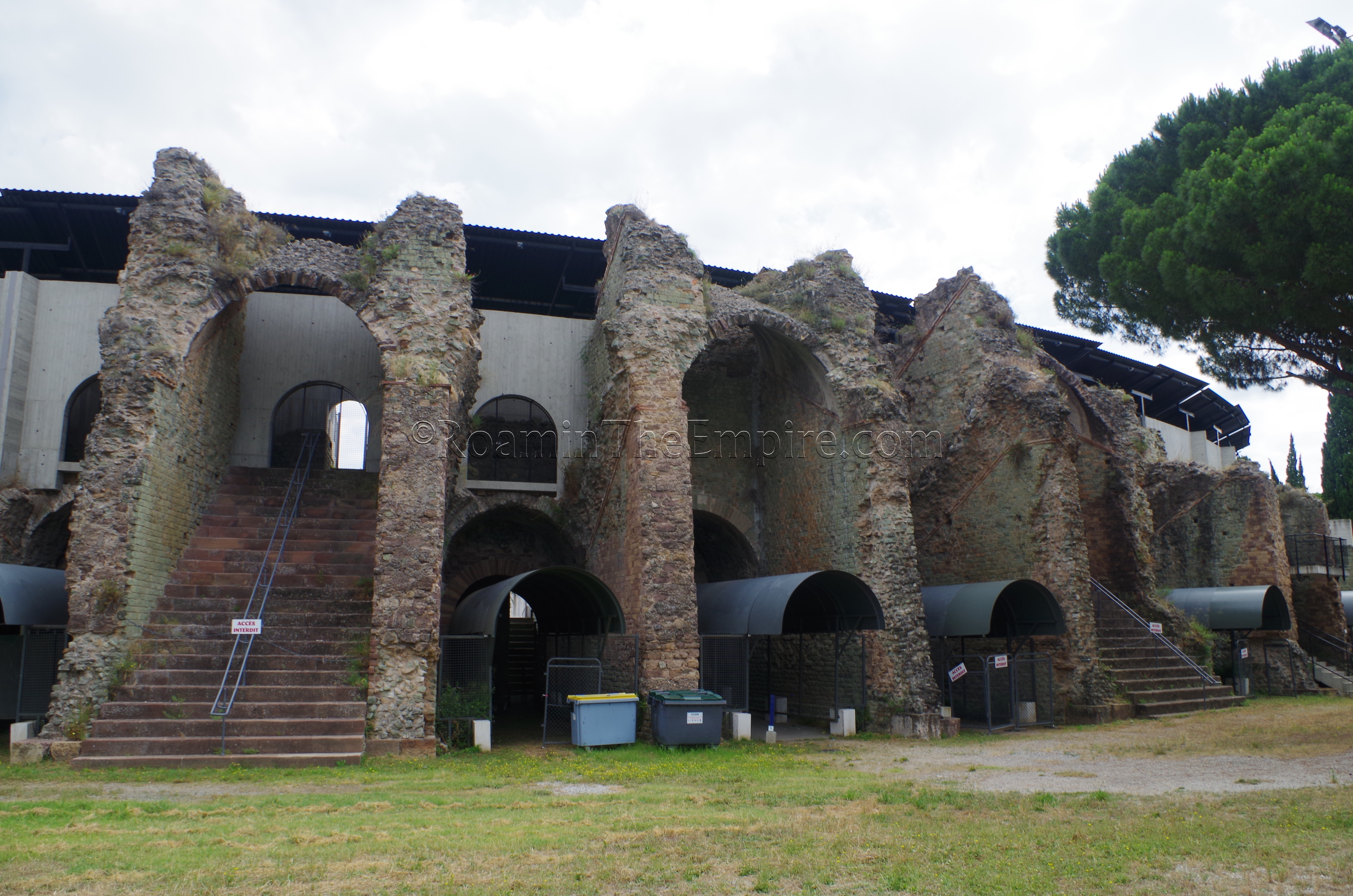
Amphitheater and Theater
From there it’s a short walk to the amphitheater, the Arènes de Fréjus. Located at 296 Rue Henri Vadon, the amphitheater is open every day except Monday in the summer and both Sunday and Monday in the offseason (October through March). From April to September it is open from 9:30 to 12:00 and 14:00 to 18:00. The rest of the year it is open 9:30 to 12:00 and 14:00 to 16:30. Admission is 2 Euros.
The amphitheater of Forum Julii seems to have originally been constructed somewhere around the range of 30-40 CE. This is based on the design of building the eastern part of the amphitheater into a hill, rather than making it completely free-standing. The lack of an external gallery also alludes to an early, rather than later, construction. Additional brickwork suggests heavy restoration/renovation in the late 2nd century CE. Capacity seems to have been about 12,000 spectators. The amphitheater was outside of the city walls, and nearly abuts the wall on the east side.
The interior of the amphitheater is completely reconstructed in stark modern concrete. Apparently a flood in 1959 washed away any interior remains of the original Roman amphitheater. Aside from the cavea and all exposed interior structures being modern, a good deal of the interior supports and gallery are reconstructions as well, though done in a style more similar to the original stonework. Really the only purely ancient remains of the amphitheater are the external supports, which are visible around most of the amphitheater that isn’t built into the hill. There isn’t really much in the way of any interpretive information on-site.
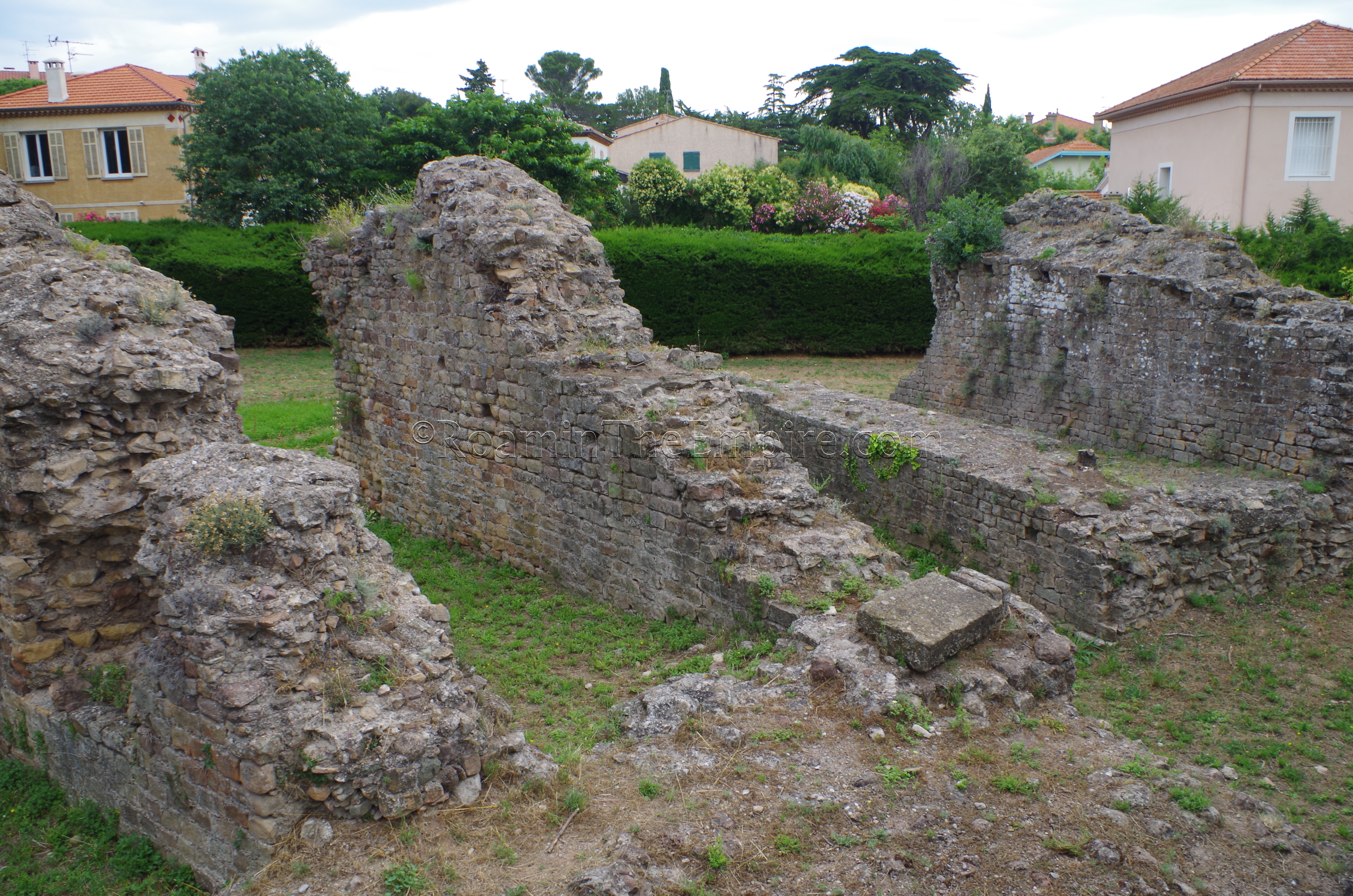
About a 15 minute walk away, at the aptly named Théâtre Romain 175, are the remains of the Roman theater. The theater is open during the summer (April through September) from 9:30 to 12:30 and 14:00 to 18:00. The rest of the year it is open from 9:30 to 12:00 and 14:00 to 16:30. It is open every day except Monday. Admission is free.
Like the amphitheater, the theater is in a pretty poor state of preservation and the cavea is completely reconstructed in modern materials, allowing for current performances. This theater was likely pre-dated by a completely wooden theater that served the settlement until the construction of this partly-stone theater in the early 1st century CE. The present theater likely wasn’t completely stone, as there is no evidence of seating near the orchestra, suggesting the cavea may have been constructed of wood. As such, the only thing that remains of the theater are the stone cavea supports and some elements of the scenae. The former are rather difficult to even view in a complete manner, as direct access is blocked off and one can only see them from the top of the modern seating. Like the amphitheater, there are no informational signs.
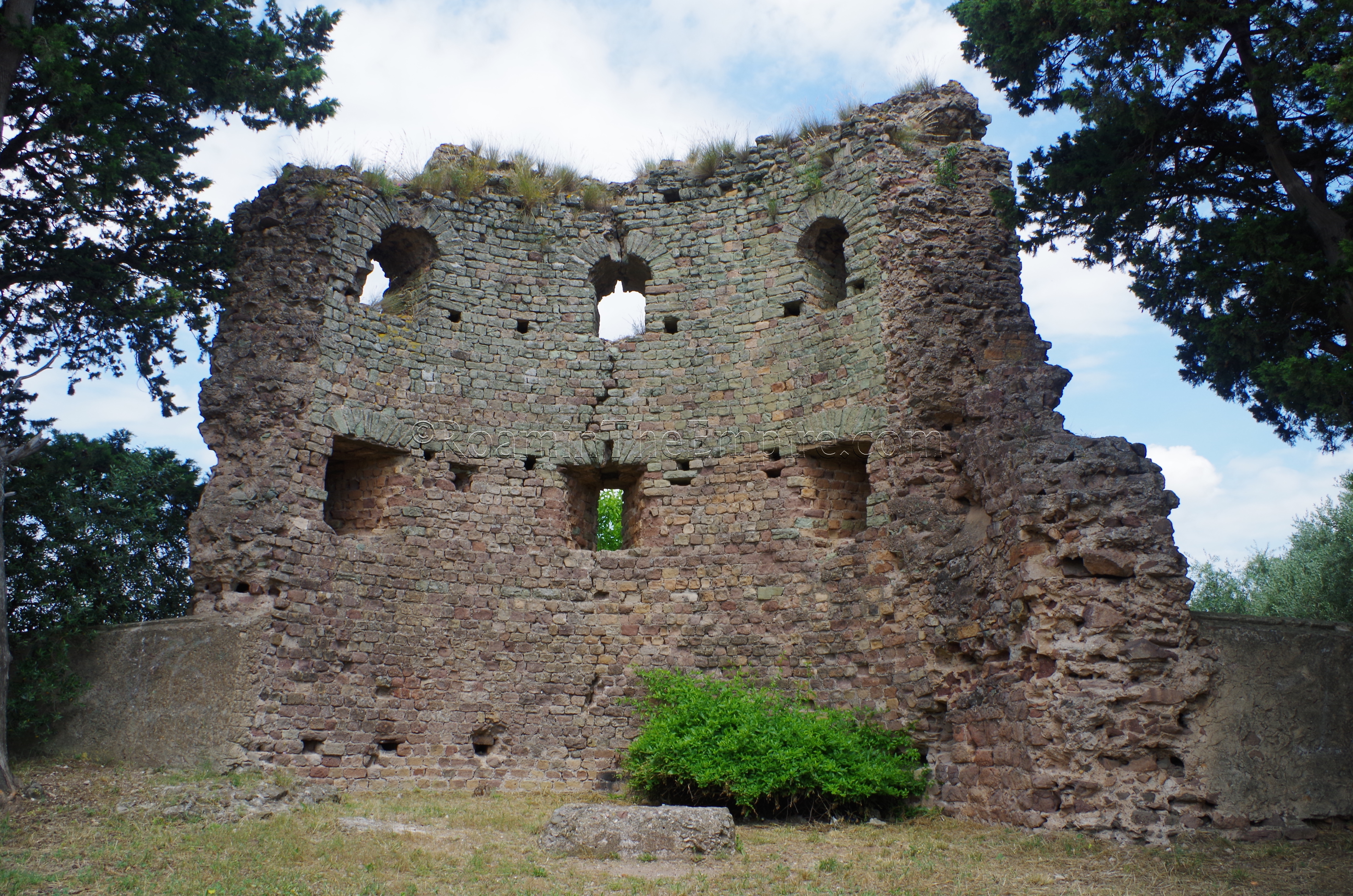
City Walls and Aqueduct
A short walk away is the start of a small circuit of the northern part of the city walls of Forum Julii. At nearly the northern edge of the Parc Du Clos de la Tour. The ‘tour’ referred to in the park is the remains one of the towers of the city’s Roman fortifications. The tower can technically be viewed from outside the park, and so that perspective can be seen at any time. The interior of the tower can be seen from inside the park, which is open daily between 7:00 and 19:00. It is a public park and there is no ticketed admission, though. Some heavily restored sections of the wall continue along the north side of the park to the west.
The wall also continues to the east across Rue Gustave Bret. At this junction, the wall and an aqueduct are combined into a single structure. At some points, the channel of the aqueduct can be seen atop the sections of the wall. A path follows the wall along as it reaches its northeast limit and turns south. The aqueduct is not able to be seen at this corner, as it cuts inside the corner of the walls, but can again be seen a little bit south. The wall continues south for another 225 meters or so, though much of it is overgrown with vegetation, the course is clearly visible and some of the more intact portions are discernable.
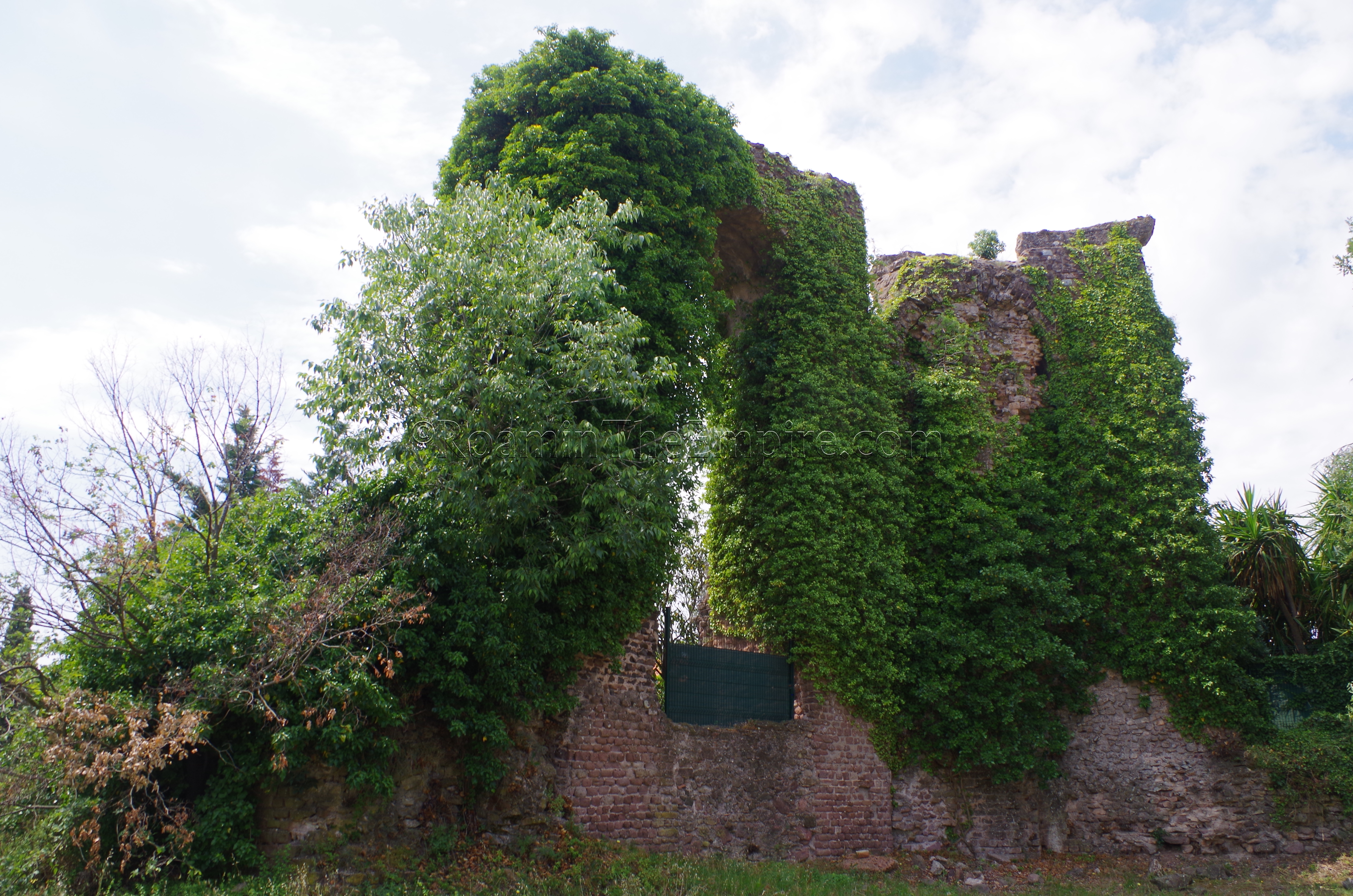
The course of the walls ends roughly at Avenue du 15eme Corps d’Armée, where the remains of a monumental gate can be seen. Though this too is overgrown with vines, the section on the north side of the road is multi-story and the concave shape of the semicircular tower of the gate is visible. A very small, low section of wall can also be seen on the south side of the street, also associated with the fortifications in this area. The gate, as well as the walls in general, dates to the Augustan period and the tower on the north side is also the point at which the aqueduct intersected with the fortifications.
Four large pillars of an aqueduct bridge are visible less than 50 meters to the east of the gate fortifications. The aqueduct was constructed in the middle of the 1st century CE and was functional until the 5th century CE. It stretches 40 kilometers to the spring of Neïssoun with a difference in elevation over the course of the aqueduct is 481 meters. The aqueduct originally only ran 26 kilometers to the La Foux spring, but it was later extended to the more robust spring in order to better serve the needs of Forum Julii.
From those first four pillars, the course of the aqueduct can be traced along Avenue du 15eme Corps d’Armée as it runs northeast. The aqueduct crosses over to the south side of the road with three tall pillars starting about 75 meters northeast of the original four. Another 90 meters down the road, the aqueduct again crosses to the north side with a single pillar at the corner of Rue des Chênes. Another single pillar is visible in front of the grocery store a bit further down the road. Approaching the traffic circle 60 meters on, there is another single pier amongst the foliage on the west side of the traffic circle.
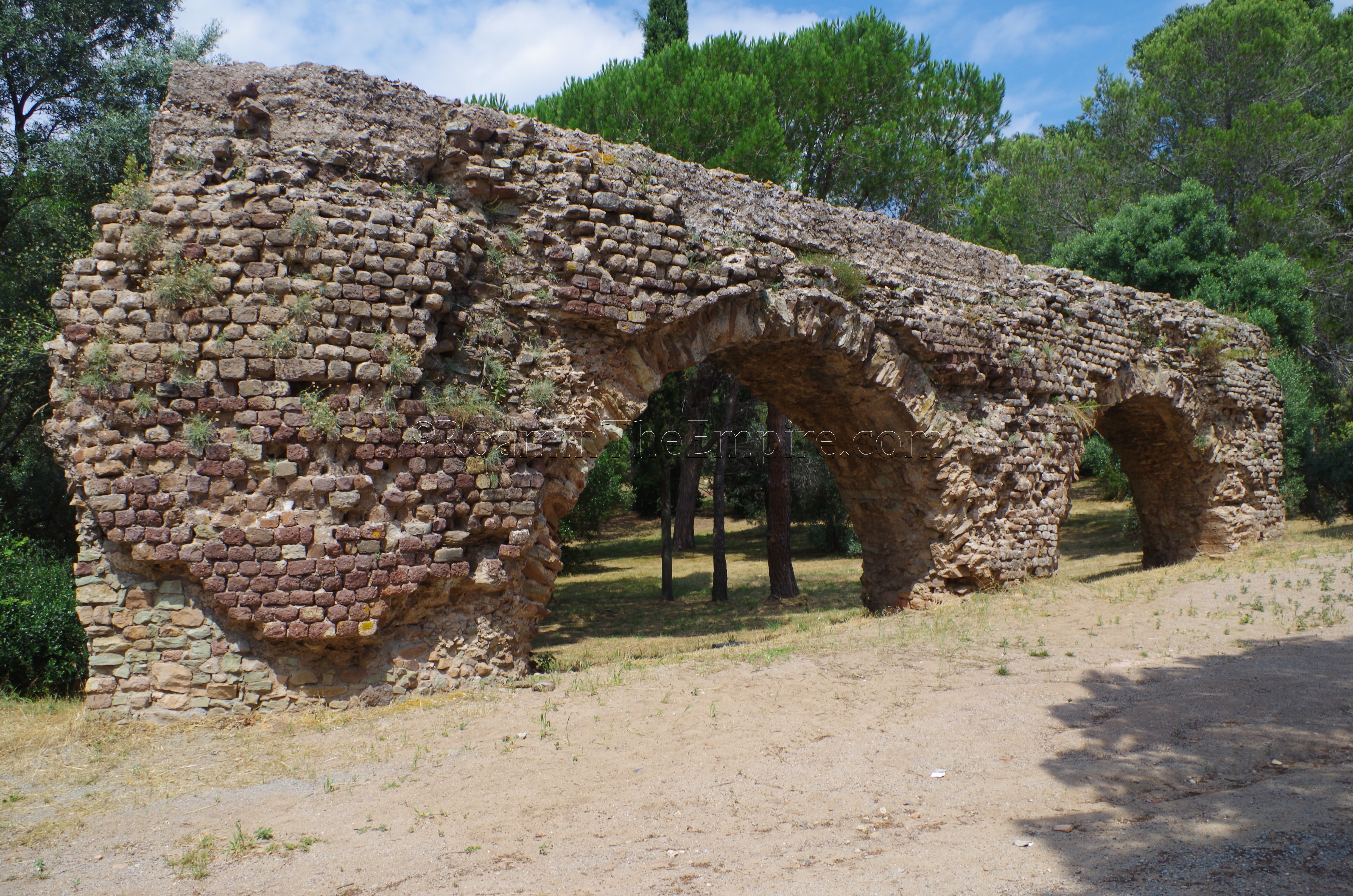
On the north side of the traffic circle is a large park, the Parc Aurélien, where a significant segment of the aqueduct is visible. It is this stretch at which the elevation of the aqueduct bridge decreases significantly to ground level. Large parts of this section are also heavily restored. Once at ground level, the channel for the aqueduct can be seen for some distance before it essentially disappears, through one can still seemingly track the course for a while longer. Once outside the city, there are apparently other significant portions of the aqueduct that can be seen as it travels from the source springs.
Tracking back to the east gate and start of the aqueducts, Rue des Marsouins can be followed about 150 meters to a point where a trail climbs up the right (south) embankment of the road. From here, there is a viewpoint at which some remains of the city wall can be seen and at which a domus is also located. The domus, which is surmised to have belonged to perhaps the prefect of the fleet or a provincial governor, is largely inaccessible. The path looks to have, at one time, led into this area where the domus could be seen, but is now fenced off (perhaps in part due to the construction going on right next to it, at the time) and only the remains of a tower in the city walls can be clearly seen. Along the embankment a little ways on, the exterior of some of the city wall is also visible.
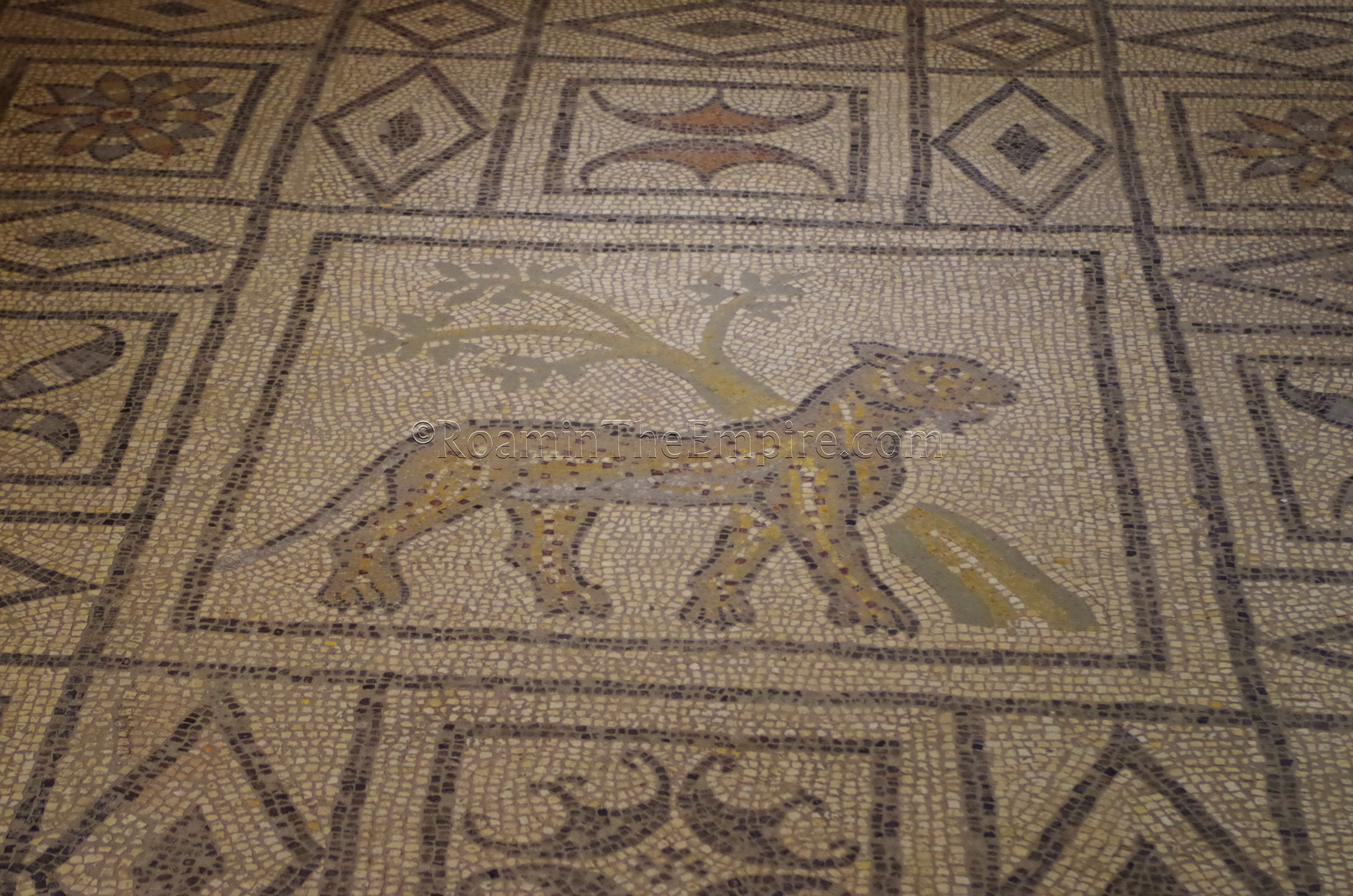
Museum and Harbor
Back toward the center of town, at 3 Place Calvini, is the Musée Archéologique. The museum is open between 9:30 and 12:30 and from 14:00 to 18:00 in the high season (April through September). The rest of the year it is open from 9:30 to 12:00 and 14:00 to 16:30. It is open every day except Monday. Admission is 2 Euros.
The archaeological museum here is rather small, it only took me about 20 minutes to get through. Despite its size, there are some rather nice pieces in the collection. Perhaps the centerpiece of the collection, in my opinion, is a large (5.7 x 3.3 meter) mosaic with a central panel featuring a panther. Found near the theater in the 1920’s, the 2nd century CE mosaic is beautifully conserved. Also present are a few fragments of larger statuary pieces, as well as some small sections of wall painting and some smaller finds from the necropolis of Forum Julii. Many of the pieces have informative placards with more information than one would typically find in a museum, particularly of this size, though it is solely in French. The museum also has a model of Forum Julii at its height, which is also an interesting addition. Despite the small size of the museum, it is well worth the stop.
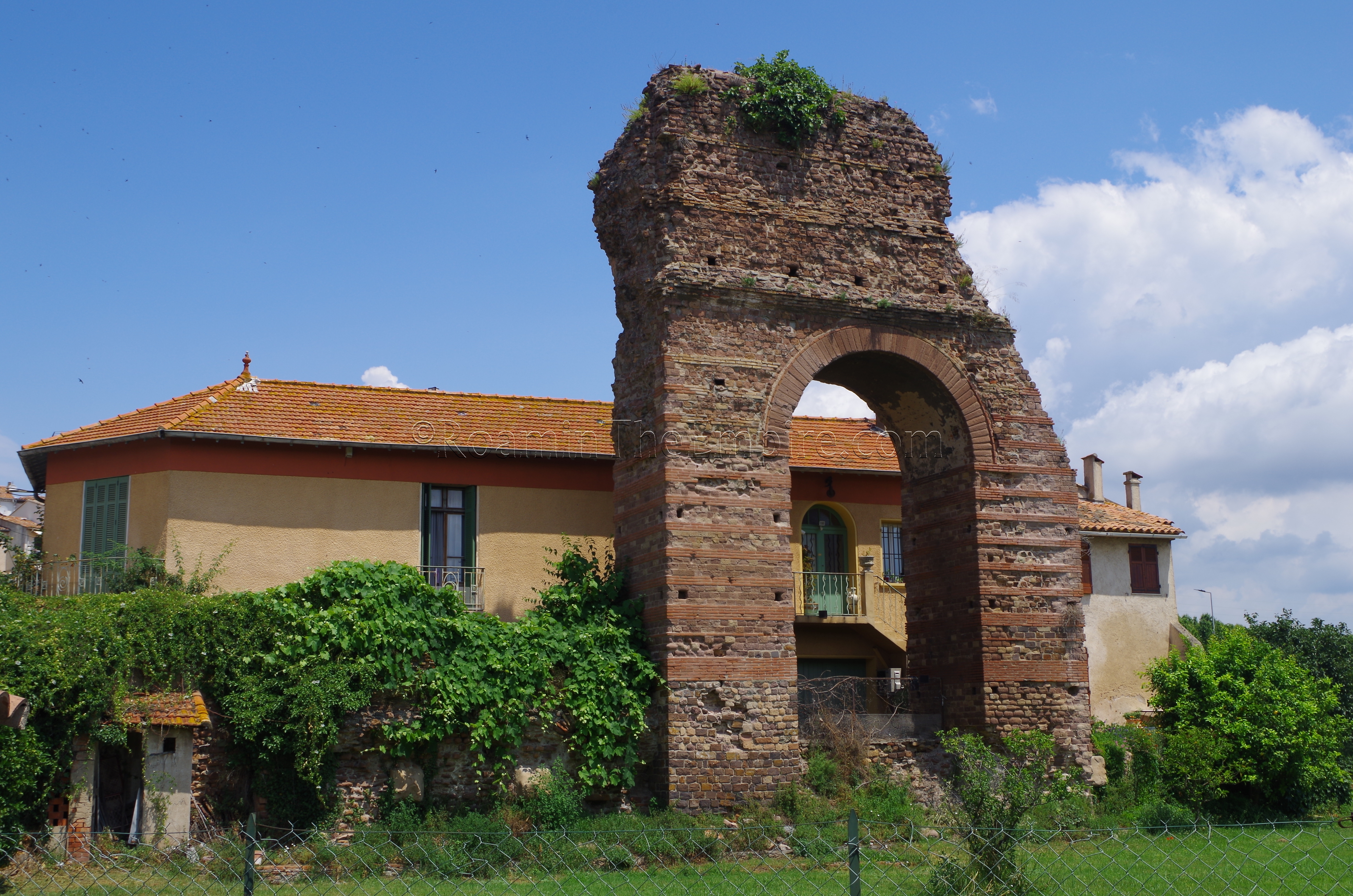
A short walk to the south is the so-called Porte d’Orée or Porte Romaine. As the name suggests, this large arch was once identified as a Roman gate in the city walls, but is now known to be an arch associated with the frigidarium of a bathing complex. This arch is pretty much all that presently remains visible of the 2nd century CE bathing complex, though apparently much more of it remained as late as the 19th century. The arch itself is on private land and good views are blocked by the house and property wall from most angles, but there is a small alley to the south that affords decent views of the arch. There is a small informational sign across the street from the arch in French with an abbreviated English description.
A short distance to the south of the Porte d’Orée is the area of the port. From Rue des Moulins, just south of the railway overpass, one can see the Roman brickwork of a terrace wall that would have formed the western part of the harbor. Upon this terraced area, La Butte St. Antoine, was an Augustan area residence that, while is clearly visible in satellite imagery, is inaccessible. A small dirt road that leads from this parking lot area where the wall is visible, up to the terrace is gated and there does not seem to be any other access. The wall of the west side of this terraced area is visible in its entirety along the east side of Boulevard Séverin Decuers. Niches are visible in the brickwork at some points, and at the far southern end is a portal that leads up to the terrace.
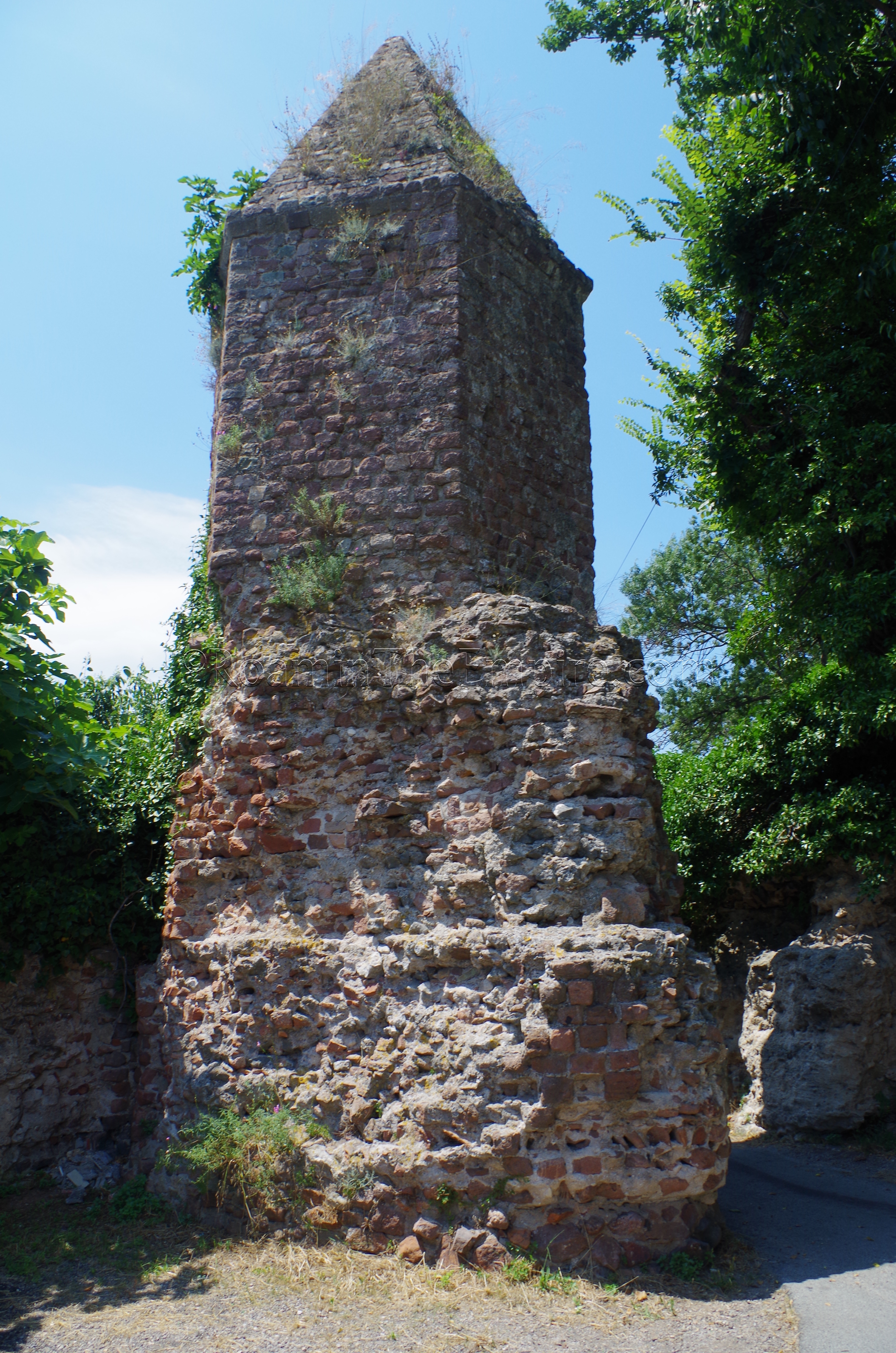
A the end of this wall, Chemin de la Lanterne d’Auguste can be followed to see some of the southern sections of this terrace wall. This portion of the wall culminates in the remains of an Augustan era tower that would have provided access to the harbor from the terraced area. It has also been suggested that this tower may have functioned as a lighthouse, though that seems to be primarily conjecture and there is no real evidence to suggest that was the case.
Following Chemin de la Lanterne d’Auguste eastward, the road follows the southern extent of the Roman harbor, the land to the north of the road would have been the actual harbor. Starting from its intersection with Rue du Porte Romaine, the walling on the south side of the road was originally part of the southern wharf of the Roman harbor, which continues on for about 250 meters until the Lanterne d’Auguste. This 10 meter tall tower has been heavily restored, the shape and size are preserved, particularly the pyramidal top. This structure originally served as the southern point of the entrance to the harbor; a similar structure probably would have marked the northern side somewhere around Rue des Horts. Though the name suggests it was used as a lighthouse, it is unclear what the exact function of the tower was.
The last few vestiges of Forum Julii are related to funerary architecture. Hidden among the foliate of a greenspace off Rue Jean Carrara is a small exedra from a funerary monument. These remains are not in-situ, but rather were dismantled and reassembled from a spot about 20 meters away; likely the adjacent business park. The remains seem to be a room that was used in ritual banquets held by the family of the deceased at the tomb. The exedra is located in a public area that is accessible at any time. It’s easy to overlook if you don’t know it’s there, as there are no signs of any kind and the state of preservation and restoration almost make it look like a modern construction.
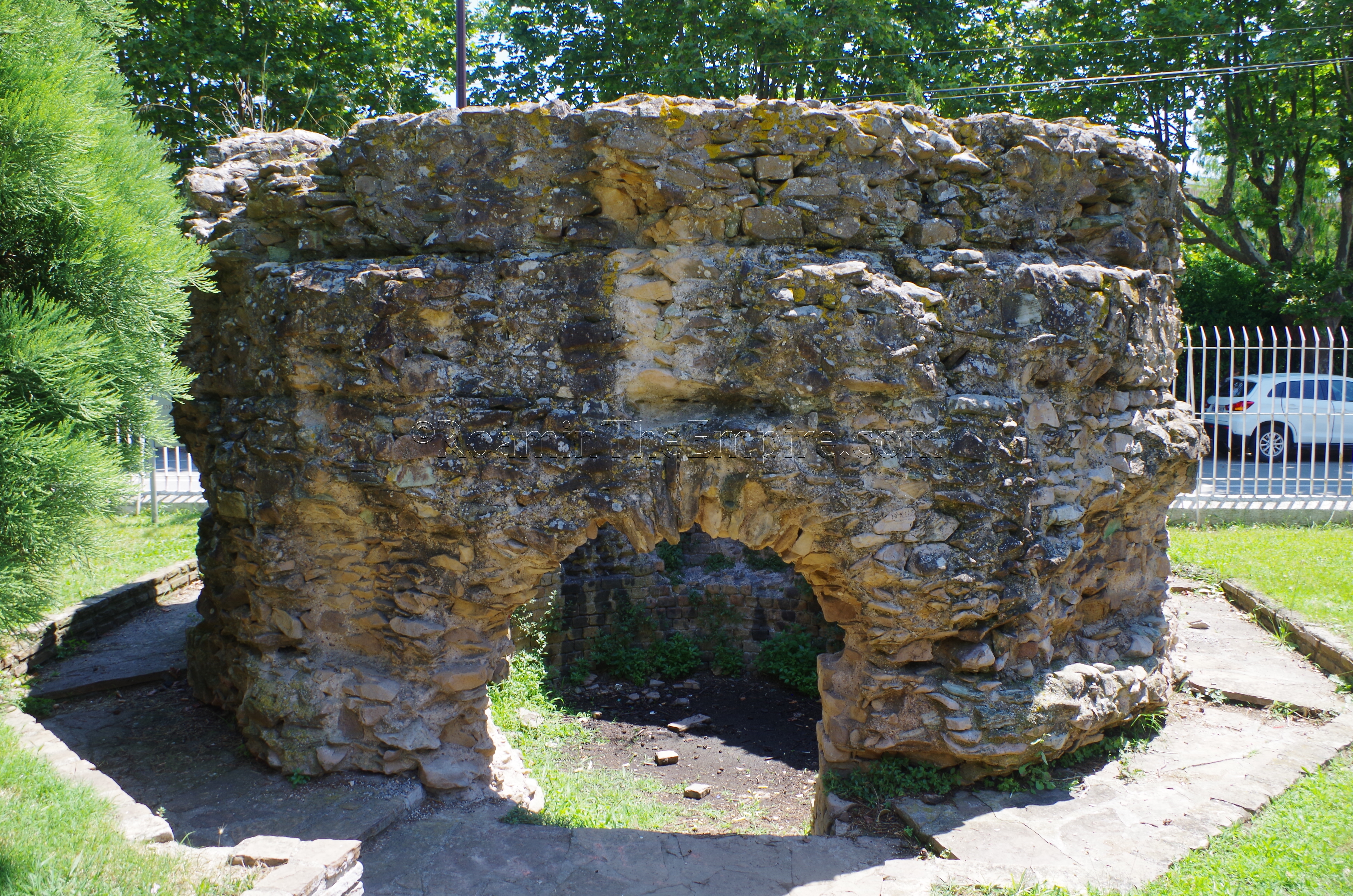
The final stop is a bit away from the core of Forum Julii, in the southwest part of Fréjus. Located on the grounds of the Gymnase Jean Vilain are the remains of a circular funerary monument, the Mausolée de la Tourrache. The mausoleum is on the grounds of a gym, which has gated access, so it is presumable that it the monument can only be accessed while the gym is open (weekdays between 8:00 and 20:00), but I don’t know if the pedestrian gate remains open. The funerary monument can be seen fine from the sidewalk, and there is even a small informational sign in French accompanying this perspective. With access to the property, though, one can walk right up and see the interior of the tomb, of which some of the niches are preserved.
The Roman remains of Forum Julii in Fréjus can easily be seen as a day trip from Nice. In fact, I only spent about 4 hours there seeing everything described in this post. Despite the fact that the vestiges of Forum Julii are numerous, most of them are quite fragmentary and don’t require a lot of time to see. Even the major monuments like the amphitheater and theater are pretty quick visits given what actually remains. That being said there’s not many sites with preserved harbor features that aren’t underwater, so it’s definitely worth a visit for that alone.
Sources:
Bromwich, James. The Roman Remains of Southern France: A Guidebook. London: Routledge, 1996.
Grant, Michael. A Guide to the Ancient World: A Dictioniary of Classical Place Names. New York: Barnes & Noble Books, 1997.
King, Anthony. Roman Gaul and Germany. University of California Press, 1990.
Stillwell, Richard, William L. MacDonald, and Marian Holland. McAllister. The Princeton Encyclopedia of Classical Sites. Princeton, NJ: Princeton U Press, 1976.


